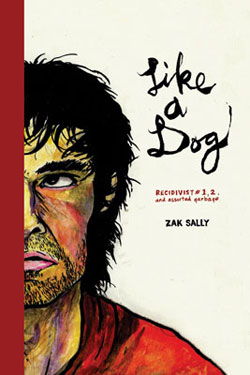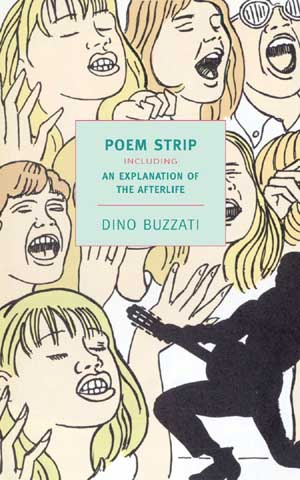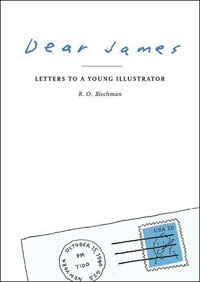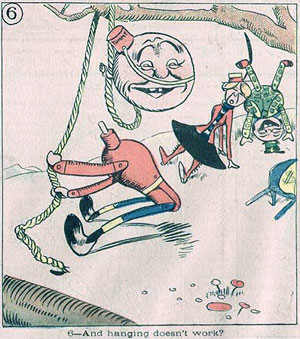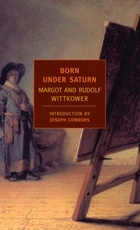Mention horror comics and most comics fans picture something like this:

(That’s from the recent anthology Four Color Fear. Which I will also post about at some point, although in that case the horrific bits aren’t what I intend to write about.)
As that panel suggests, most comics that get classified as “horror” aren’t so much scary as campy. Some people don’t think comics can be viscerally scary at all, and they have a point, but there’s a caveat. As Richard Cook writes in the essay I just linked to:
To the extent that “scary” refers to the visceral, immediate fears that horror movies deliver so effortlessly, the answer is yes. But if “scary” also encompasses the deeply-rooted fears and common anxieties of the readers, then perhaps there is some hope for horror comics.
A recent post at the blog Too Busy Thinking About My Comics about scary moments–scary in the “anxious” sense–which snuck into ordinary superhero comics got me thinking about what comics, if any, give me the sense of creeping unease I get from good weird fiction. And the first answer that came was Jim Woodring’s Frank. Which might sound a little weird on first blush to anybody only vaguely familiar with Frank, because Frank looks like this:

Frank’s world–dubbed the “Unifactor”–is not immediately alarming (though it gets more so the closer you look). But it unsettles me–something the merely queasy EC tradition of O.-Henry-with-gore horror comics can’t pull off. To explain why Frank is so much more powerful than Tales from the Crypt (and why I suspect the unsettling core of this work might whisper too quietly, or in too foreign a tongue, for some readers to hear) I’ll first have to describe the kind of thing Woodring does.
One story that particularly creeped me out was “Frank in the Ruse Garden.” This is the story that finishes the first Frank collection published by Fantagraphics in 1994; I’m pretty sure it also appears in the big Frank hardcover and the recent Portable Frank. Like all the Frank stories, it’s told without dialogue, and it goes like this:
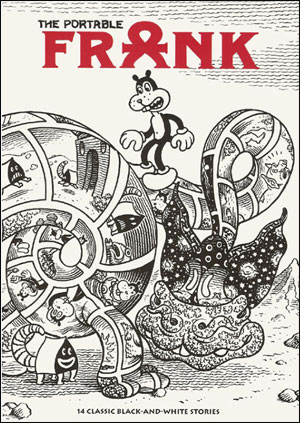
A leaflet in Frank’s mailbox informs him that he’s won a dream vacation. Unbeknownst to Frank it was put there Manhog, the Unifactor’s resident ne’er-do-well. Which explains why, after a long drive into a stony and desolate landscape, Frank finds a deserted cabin jutting half over a crevasse. The accommodations are ramshackle, the views aren’t verdant so much as vertiginous, and the only entertainment option is the Rev. J. Bufo’s fine book, The Case Against Art. Frank beds down and makes the best of things.
He wakes in the night to pounding and clattering. A swarm of animate hammers are whacking at the porch. Frank chases them off. They come back. Frank stuffs them into a pillowcase and tosses them into the canyon. He’s just chasing down one more that had a go at his car when he trips over a shape which rises out of the dirt to reveal a Great. Big. Momma. Hammer.
Uh-oh.
A chase scene! Lots of really scary-looking pounding from the big hammer! The hammer backs Frank up to the cliff… and overbalances, plummeting to the ravine floor like Wile E. Coyote.
As that last reference suggests, this is, in outline, all very Warner Brothers. Maybe like one of those slightly alarming Robert Clampett cartoons. But that’s not what I think of when I read the actual comic. “Frank in the Ruse Garden,” like all the Frank stories, like most of Jim Woodring’s work, is one hundred percent unadulterated Uncanny. Like Jim Woodring saw fever dreams we’d forgotten ages ago, and put them down on paper to remind us.
Woodring’s deep blacks and strong pen strokes have the look of and 18th-century woodcut from a book of forgotten lore. It feels like there’s more information there, revelations for readers who look hard enough and understand the context. And the night scenes of “Frank in the Ruse Garden” have a feeling of darkness and silence and aloneness that’s hard to capture in comics; I know what night feels like at Frank’s cabin, what the nothing-but-clattering sounds like. It feels real enough that, as abstract as Frank appears, I forget he’s a… well, whatever he is. He’s more or less a person.
But mostly what makes “Frank in the Ruse Garden” very much not a Porky Pig adventure is what happens after the big hammer’s last plunge. Frank sits on the edge of the ravine and stares down. In the ravine is the pillowcase, now still, and the great hammer, broken in two, its expressionless eye completely dead. Frank has screwed up. Something unusual and tremendous has gone out of the world. No matter the provocation, Frank should never have allowed the situation to come to this.
This is one of the core conflicts driving the Frank stories. The Unifactor is an animistic world of spirits and strange forces. Time and again, Frank comes in contact with numinous wonders, and fail to rise to the occasion. Frank comes upon a field of floating souls, and grabs one to use as a flying horse. Frank dives into a well ringed with eyes, and emerges mutated and warped. Frank wanders into the House of the Dead wearing a party hat, and it’s, like, awkward.
Manhog, too, tends to bite off more than he can even get his teeth around. He doesn’t just fail to rise to the occasion–he doesn’t realize there’s an occasion to rise to. Frank wanders down the wrong path because he’s looking for something indefinable, hungry for meaning; Manhog is just hungry. Usually Manhog ends up in worse shape than Frank.
The difference is that Frank is open to whatever experience has to teach him. Manhog never learns; he believes he knows everything he needs to, so his surprises are usually nasty ones. Frank knows the world is bigger than he is, it’s full of things he doesn’t understand, and he actively tries to learn to understand them. He may not do the right thing but in the end he at least learns what the right thing is, even if it’s sometimes too late.
Here’s why I find the Frank stories creepy as well as uncanny, and why “Frank in the Ruse Garden” scared me more than anything from the Vault of Horror, and why it might not scare someone else at all. Lurking under the surface of Frank are philosophical horrors, quietly unsettling ideas: “Good” is not a switch you flip. Rising above Manhog’s level is not a one-time effort, it’s an active, constant process, something you get up every morning and do. For all his good intentions, with the best will in the world, sometimes Frank is still the kind of person who can throw a pillowcase of baby hammers off a cliff. And Frank, as strange as he looks, is us.



